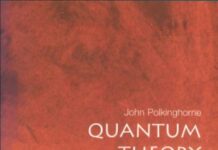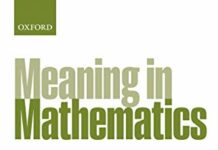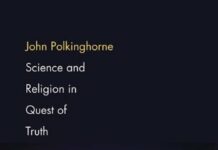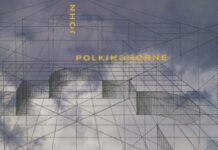
Ebook Info
- Published: 2007
- Number of pages: 208 pages
- Format: PDF
- File Size: 0.00 MB
- Authors: John Polkinghorne
Description
The latest communiqué from John Polkinghorne as he continues his survey of the frontier between science and religion Reality is multi-layered, asserts the Reverend John Polkinghorne, and in this insightful book he explores various dimensions of the human encounter with reality. Through a well-reasoned and logical process, Polkinghorne argues that reality consists not only of the scientific processes of the natural world but also the personal dimension of human nature and its significance. He offers an integrated view of reality, encompassing a range of insights deriving from physics’ account of causal structure, evolutionary understanding of human nature, the unique significance of Jesus of Nazareth, and the human encounter with God. The author devotes further chapters to specific problems and questions raised by the Christian account of divine reality. He discusses, for example, the nature of time and God’s relation to it, the interrelationship of the world’s faiths, the problem of evil, and practical ethical issues relating to genetic advances, including stem cell research. Continuing in his pursuit of a dialogue between science and theology that accords equal weight to the insights of each, Polkinghorne expands our understanding of the nature of reality and our appreciation of its complexity.
User’s Reviews
Editorial Reviews: About the Author John Polkinghorne, KBE, FRS, is fellow and retired president of Queens’ College, Cambridge. Winner of the 2002 Templeton Prize, he is both a quantum physicist and an Anglican priest.
Reviews from Amazon users which were colected at the time this book was published on the website:
⭐John Polkinghorne KBE, FRS is the author of many books on themes related to science and religion; he is uniquely qualified to speak on both, having been a particle physicist for the larger part of his career then latterly an Anglican priest. In “Exploring Reality” Polkinghorne seeks to combine the perspectives of science and Christianity into what he calls a “stereoscopic world view.” I took the title of this review from the author’s listing of three main points he wanted to make: “(1) Defense of realism in science depends partly upon recognizing the unexpected character often stubbornly displayed by nature … the feel of actually doing science is undeniably one of discovery, rather than pleasing construction. (2) An experience fundamental to the pursuit of science is a sense of wonder, induced by the beautiful order and fruitful nature of the universe … The religious believer can find here grounds for understanding the universe as a creation, whose deep order and inherent fertility express the mind and will of its creator. (3) If interpreted experience is to be the basis of our understanding reality, then our concept of the nature of reality must be sufficiently extensive to be able to accommodate the richness of our experience.”Polkinghorne explains in a very accessible way complex subjects such as the quantum ‘superposition principle’, non-locality, the EPR effect, and ideas about the origin of the universe such as the ‘multiverse’ hypothesis. One or two reviewers have suggested that he is difficult to read, but I do not find this to be the case provided one takes the time to grasp the concepts he explains. For example, the following sentences sound daunting but make perfect sense on reflection: “the portfolio of causes that bring about the future is not limited solely to the description offered by a methodologically reductionist physics and framed only in terms of the exchange of energy between constituents … It is clear that science has not demonstrated the causal closure of the natural world. Nothing it can tell us requires us to deny our directly experienced human capacity for intentional action, nor can science forbid religious believers to hold to their belief in God’s providential interaction with the history of the world.” Once one gets used to his style it is easy to appreciate the elegance in his use of vocabulary.Subjects covered include consciousness, the soul, altruism, and the nature of time. But the very best parts of the book, for me, were the discussions of the historical Jesus and of what the author calls “divine reality”. Polkinghorne also speaks with tremendous wisdom on the subject of abortion. Maintaining the Christian ethical position on matters of life and death, he notes that “no church holds requiems for embryos that die through failing to implant” thus showing a pragmatic approach to a deeply sensitive life problem. This would be an excellent introductory book for one interested in reading Polkinghorne.
⭐John Polkinghorne does it again. We benefit from his scientific knowledge and see that coupled to Christian faith in a unique manner. THis book is something you ought to read, whether you are a believer or not.
⭐John Polkinghorne is the most profound thinker on Science/Religion and Reality that has ever lived. His technical and metaphysical grasp of the subjects individually is top notch and how they fit together is unsurpassed.
⭐I bought this after talking to a few people and having enjoyed the “Closer to Truth” series on PBS. I am glad I did.
⭐My review will not be unnecessarily complex. I’ve read dozens of books by Greene, Kaku, Aczel, Susskind, Hawking, and Sagan and I thought this would be an interesting new perspective. Perhaps it’s due to the author’s culture but every chapter was a struggle. One thought didn’t seem to lead to the next and the language seemed intentionally obtuse, not reader friendly.
⭐It seems astonishing how meanings of words, like “reality”, can be completely turned around, especially by a scientist, expected to truly explore reality.The title of this book, “Exploring Reality”, appears to me remarkably similar to the title of my website (begun about half a dozen years ago and accessible through my last name), “Exploring possible human knowledge”. Could Dr. Polkinghorne have been influenced by it? Whether he was or not, exploring reality or possible knowledge both connote rigorous pursuit of truth (the last word another one appropriated by the author for his own interpretation), understood as seeking undisputable evidence in either the physical world or the world of reason guided by logical principles as exemplified in mathematics.The author, however, applies the words “reality” and “truth” freely to his bountiful speculations about religious contents, as in his 5th chapter, “Divine Reality: The Trinity” (p.90; it appears for the author enough to call something Reality for the word to apply). There seems accordingly no point for me to go much farther with this review, although I, too, am a theist, but find my justifications in the mentioned forms of dependable evidence.I may only cite one example of the troubling ingredients a dogma can contain despite efforts to describe them in best sounding terms. Dr. Polkinghorne speaks in the book at least twice (pp.65, 80) of Jesus’ “cleansing” of the temple, the reference being to Jesus’ “making a whip of cords” (John 2.15) and driving with it traders out of the temple. I cannot help being reminded of “ethnic cleansing” by that description.Notwithstanding my criticism, I felt I should add at least a second star for rating because of the author’s evident sincerity.
Keywords
Free Download Exploring Reality: The Intertwining of Science and Religion in PDF format
Exploring Reality: The Intertwining of Science and Religion PDF Free Download
Download Exploring Reality: The Intertwining of Science and Religion 2007 PDF Free
Exploring Reality: The Intertwining of Science and Religion 2007 PDF Free Download
Download Exploring Reality: The Intertwining of Science and Religion PDF
Free Download Ebook Exploring Reality: The Intertwining of Science and Religion




